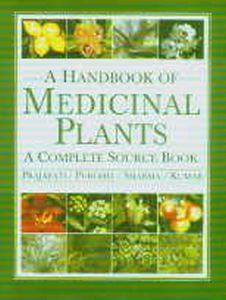
"A Handbook of Medicinal Plants (A Complete Source Book), is the first book of its kind. The book describes more than 1346 medicinal plants found in the world. The book includes vernacular names, description, distribution, part use, utilization, active principles, agronomic practices and colour plates (about 870 photographs). Separate chapters on organic farming, biofertilizers and biopesticides uses for sustainable cultivation of medicinal plants tips for medicinal plants cultivation and meltitire agriculture systems of medicinal plants have been presented. The book also includes complete addresses (including E-mail addresses) of research institutes and agencies, NGOs, importers and exporters, traders and commission agents, growers, seeds and planting materials suppliers, medicinal gardens, books, analytical testing facilities, market news services, important web sites of the world. Glossary of various terms used and common names of medicinal plants in different languages have been appended." (jacket)
Contents: I. Medicinal plants: an overview: 1. Medicinal plants: an overview. 2. History of medicinal plants: a world scenario. 3. Medicinal plants and human system. 4. Classification, identification and naming of medicinal plants. 5. Cultivation of medicinal plants: an eco-friendly approach. 6. Diseases of medicinal plants. 7. Pests and pest management in medicinal plants. 8. Harvest technology and value addition of medicinal plants. 9. Conservation strategies of medicinal plants. 10. Economic aspects of medicinal plants. II. Medicinal plants - A to Z. III. Medicinal plants - colour atlas. IV. Medicinal plants - resources: 1. Extractors. 2. Educational institutes. 3. Research institutions. 4. Pharmaceuticals. 5. Analytical and testing facilities. 6. Herberia and medicinal gardens. 7. Foreign buyers. 8. Non Government Organisations (NGO’s). 9. Growers / seeds / planting material suppliers. 10. Traders and commission agents. 11. Important World Wide Websites. 12. Glossary. 13. List of books and periodicals. Index: common names of medicinal plants in different languages (for section II).